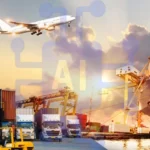The transportation landscape is on the cusp of a monumental transformation as the integration of artificial intelligence (AI) redefines how we move people and goods. The fusion of AI and transportation promises safer, more efficient, and sustainable mobility solutions that cater to the needs of an increasingly interconnected world. From autonomous vehicles to predictive traffic management, AI is propelling transportation into a new era of innovation, convenience, and environmental responsibility. In this article, we delve into the significance of AI in transportation, its transformative impact, and the strategies required to navigate this dynamic mobility landscape.
Paving the Way for Intelligent Mobility
The traditional transportation paradigms are evolving to address challenges such as traffic congestion, road safety, and environmental concerns. The significance of AI in transportation lies in its ability to introduce intelligence into mobility solutions, optimize routes, enhance safety measures, and reduce transportation systems’ carbon footprint.
AI-powered algorithms can process real-time data from sensors, cameras, and GPS devices, offering insights that help streamline traffic flow, manage congestion, and even guide autonomous vehicles. This intelligent approach to transportation is more than a technological upgrade—it’s a fundamental shift that can reshape how we interact with our urban and global environments.
Redefining Commuting and Cargo Movement
The impact of AI in transportation spans various domains, influencing how we navigate our world and manage the movement of goods. AI is the driving force behind the development of autonomous vehicles that can navigate, interact with other vehicles, and make decisions without human intervention. This technology can reduce accidents, increase mobility for disabled individuals, and reshape urban planning.
AI algorithms analyze historical and real-time data to predict traffic patterns, allowing cities to optimize traffic light timings, reroute vehicles, and reduce congestion. AI enhances supply chain management by optimizing routes, tracking real-time shipments, and minimizing delivery times. This efficiency benefits businesses and contributes to reduced emissions and fuel consumption.
Ethical Dilemmas and Technological Infrastructure
While the promise of AI in transportation is immense, it also comes with challenges that demand careful navigation. One pressing concern is the ethical dimension of autonomous vehicles. AI algorithms’ decisions in situations involving human lives raise complex ethical dilemmas. Balancing the need for safety and the moral implications of AI-driven decisions requires thoughtful consideration.
Furthermore, the deployment of AI in transportation requires a robust technological infrastructure. Seamless communication networks, reliable sensors, and robust cybersecurity measures are essential to ensure AI-driven transportation systems’ safe and effective functioning.
Navigating the Future of AI in Transportation
As AI continues to redefine transportation, several strategies can ensure its potential is maximized while challenges are addressed. Governments and regulatory bodies must establish clear guidelines for deploying AI-driven transportation solutions. Striking a balance between innovation and safety is essential to foster the responsible adoption of these technologies.
Including the public in discussions about AI in transportation is crucial. Transparency about AI systems’ capabilities and limitations builds trust and encourages constructive dialogue about the future of mobility. Investments in technological infrastructure—including communication networks, sensors, and data processing capabilities—are necessary to support the implementation of AI-driven transportation systems.
The influence of AI in transportation extends beyond individual commutes—it shapes urban planning, supply chain logistics, and global travel. However, the journey forward requires collaboration, innovation, and a commitment to addressing ethical considerations.
Conclusion
Integrating AI into transportation marks a turning point in our approach to mobility. The potential to reduce accidents, alleviate traffic congestion, and create more efficient transportation systems is within reach. This technological evolution is not just about changing how we travel; it’s about creating a more connected, accessible, and sustainable world.
In the unfolding narrative of transportation innovation, AI in transportation stands as a chapter that symbolizes our ability to shape the future of mobility. By fostering collaboration between technology developers, regulators, and the public, we can harness the transformative potential of AI to create a world where transportation is not just a means of getting from one place to another but a cornerstone of efficiency, safety, and progress.












